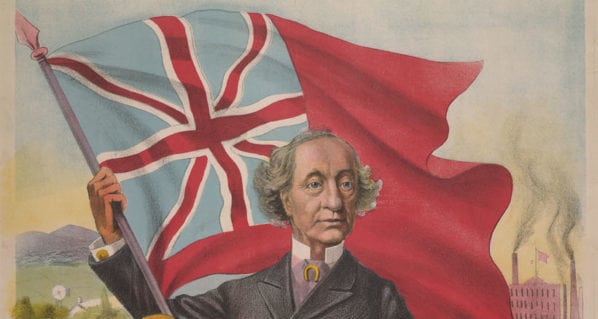 The modern fashion of attempting to rewrite history appears to be gaining ground.
The modern fashion of attempting to rewrite history appears to be gaining ground.
Hector-Louis Langevin’s name no longer adorns his building in Ottawa, the statue of Edward Cornwallis in Halifax has been toppled. And now, the history rewriters are busily taking dead aim at the most famous Canadian of all – John A. Macdonald.
The three men stand accused of thinking like men of their time.
Now there’s a new twist. The history rewriters are going after one of Canada’s most famous artists. The Art Gallery of Ontario has decided, in its wisdom, to rename a painting by iconic Canadian artist Emily Carr. The painting is of a simple white church set in the lush forests of Vancouver Island. Carr titled the painting Indian Church.
The gallery worthies seem to be offended by the word Indian.
Perhaps they’re unaware that Canada still has an act called the Indian Act. The fact that the outdated statute would have been gone long ago if not for the privileged people who benefit monetarily from it is beside the point.
Or what about the description of a few days of beautiful weather in fall as “Indian summer”? That’s a lovely phrase – there is nothing offensive about it at all. Or maybe we should tell Pauline Johnson, the much-loved Canadian poet – and an Indigenous person herself – that her sensitive and thoughtful poem Cry of an Indian Wife is somehow deemed by these outraged historical revisionists to be a racist poem?
The fact is that although Columbus got it a bit wrong, the word “Indian” has been part of our language and history for more than 500 years. That’s not about to go away.
But for reasons that appear to make sense to these people only, they have removed the title given to the work by the artist and replaced it with an Indigenous geographical term associated with one of the nearby Indigenous groups, in order to remove what they call a racial insult.
But just a minute here! When one examines anyone’s history, one is bound to find warts. For instance, virtually all Indigenous tribes practised slavery. On the West Coast, slavery was a particularly important part of the culture of most tribes. Ocean trips would be made up and down the coast – as far as California – to forcibly capture slaves. This was part of their history.
No one would deny that slavery is one of the most egregious types of racism. Does it really make sense to substitute one allegedly racist name for another?
During the discussion over renaming the Langevin Block, Sen. Murray Sinclair made a very important point when he suggested that rather than tearing down existing statues and renaming buildings, we should consider using the names of important Indigenous people from the past when we build new ones. Then we will be adding to our history, as opposed to trying to revise it after the fact.
Let’s do that. And if it turns out that some of those important people are judged to be less than perfect by the standards of today, let us also remember that we will surely be judged to have been less than perfect by the standards of tomorrow.
In George Orwell’s dystopian novel 1984 he has the Ministry of Truth rewriting history to coincide with the fascist regime’s current propaganda needs. The Ontario Art Gallery is not this kind of evil entity. I think these are well-intentioned people who are trying to do the right thing. But they are not.
Leave Carr’s beautiful painting as it is. And leave our history alone, warts and all.
Brian Giesbrecht is a retired judge and a senior fellow with the Frontier Center for Public Policy.
The views, opinions and positions expressed by columnists and contributors are the author’s alone. They do not inherently or expressly reflect the views, opinions and/or positions of our publication.


